When you step into a room adorned with mid-century modern furniture, you’re not just entering a space; you’re embarking on a timeless journey that celebrates simplicity, functionality, and beauty. This style, with its clean lines and organic forms, has gracefully transcended decades, offering both beginner and seasoned home decorators a treasure trove of inspiration to explore. Whether you’re just dipping your toes into the world of interior design or you’re a seasoned stylist looking to refresh your space, understanding mid-century modern furniture can be a transformative experience.
Mid-century modern design is far more than a fleeting trend—it’s a testament to the enduring appeal of thoughtful craftsmanship and innovative design. In this article, we’ll guide you through the essentials of this iconic style, from recognizing key furniture pieces to integrating them seamlessly into your home. You’ll discover how to strike the perfect balance between retro charm and contemporary comfort, making your living spaces truly stand out.
With every piece of mid-century modern furniture, there’s a story waiting to be told, a history to be celebrated. As we delve into this fascinating world, you’ll learn not only about the origins and evolution of the style but also practical tips on sourcing and styling these pieces in your own home. Prepare to be inspired by a design movement that continues to captivate and empower decorators around the globe, encouraging you to create spaces that are both stylish and deeply personal.
Origins of Mid-century Modern Design
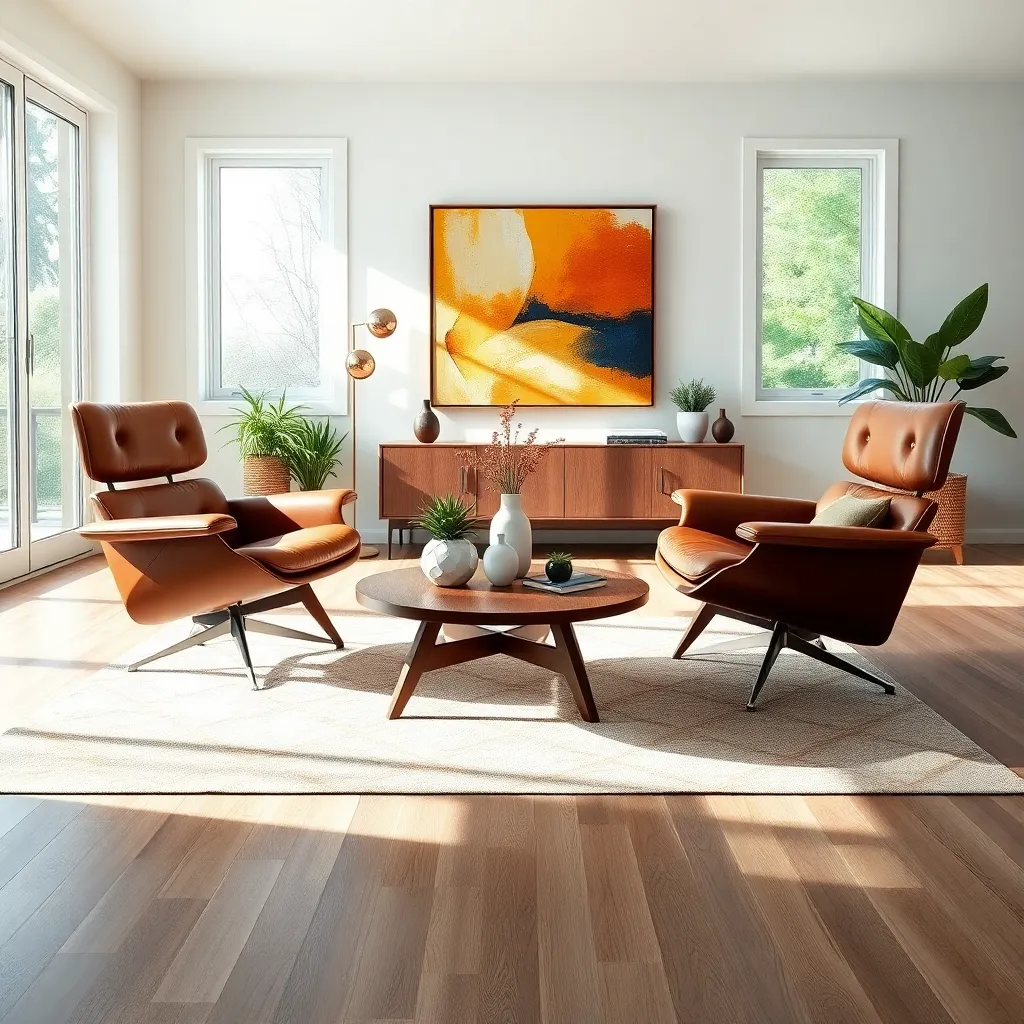
The mid-century modern design movement emerged during the mid-20th century, spanning the 1940s to the late 1960s. It was characterized by a distinct blend of simplicity, functionality, and elegance, making it a timeless choice for today’s homes.
To incorporate mid-century modern furniture into your space, focus on selecting pieces with clean lines and organic shapes. Look for materials like teak, walnut, and oak, which lend warmth and authenticity to any room.
Consider pairing these wooden elements with textiles in bold, geometric patterns to add visual interest. This combination enhances the signature aesthetic of mid-century modern design, effortlessly merging form and function.
Color plays a crucial role in achieving the mid-century look. Opt for earthy tones like olive green, mustard yellow, and burnt orange to create a cohesive and inviting atmosphere.
Key Characteristics of Iconic Pieces
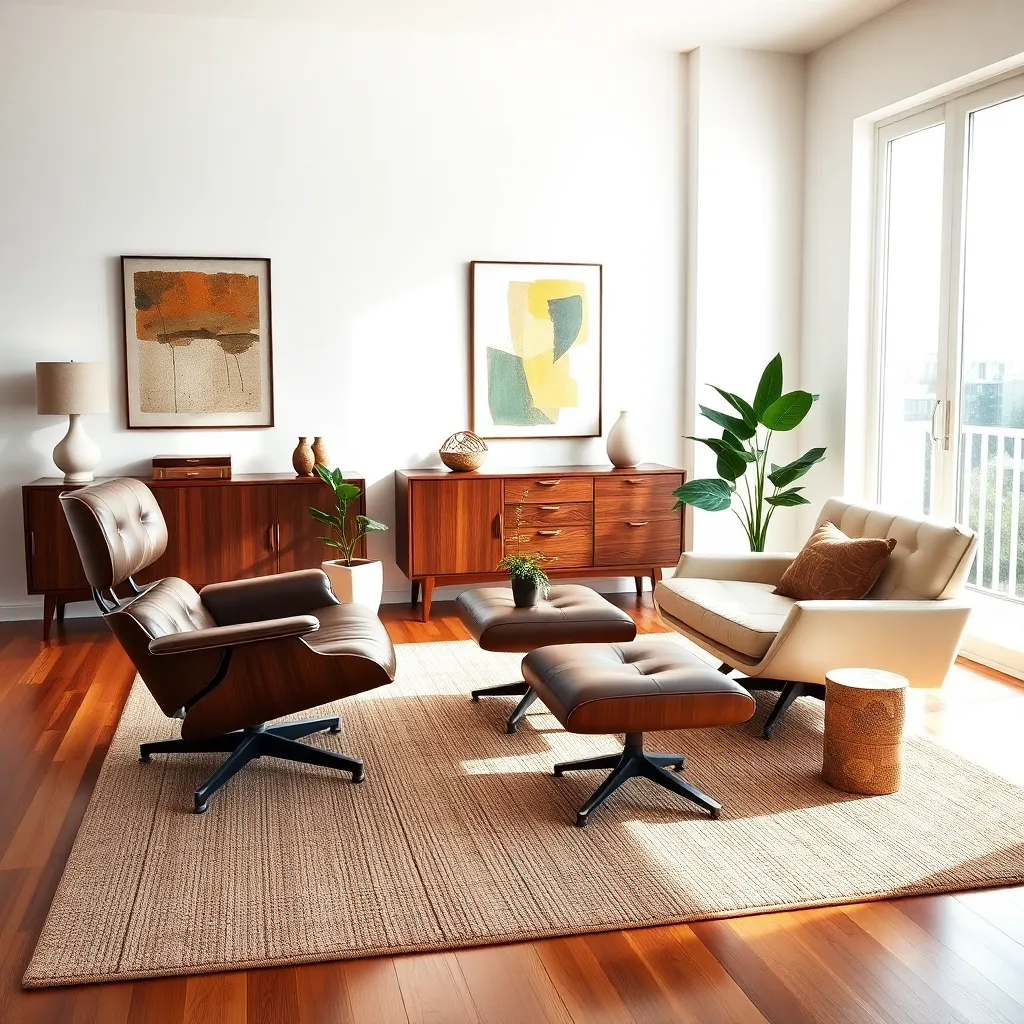
Iconic pieces of mid-century modern furniture are celebrated for their clean lines and functional form. To incorporate these pieces into your home, focus on selecting items with a streamlined silhouette that can serve as a focal point in any room.
Consider materials that are hallmark features of the era, such as teak, walnut, and metal. These materials not only offer durability but also add a touch of natural elegance to your space, making them a wise choice for both beginners and seasoned decorators.
One of the defining traits of mid-century modern pieces is their ability to blend seamlessly with various design styles. Pairing a classic Eames lounge chair with a contemporary sofa creates a balanced contrast, elevating the aesthetic of your living room.
Color plays a pivotal role in highlighting the beauty of these iconic pieces. Opt for a palette that includes earthy tones and bold accent colors like mustard yellow or deep teal to bring out the richness of the wood and the sleekness of metal accents.
Advanced decorators might experiment with strategic placement to maximize space and light. Positioning a low-profile credenza against a large window can enhance natural light flow, making the room feel more open and inviting.
To elevate your space further, incorporate textiles that complement the furniture’s design. Consider using geometric patterns or textures in your cushions and throws, which can add depth and interest without overwhelming the simplicity of the mid-century aesthetic.
Incorporating Timeless Materials and Forms
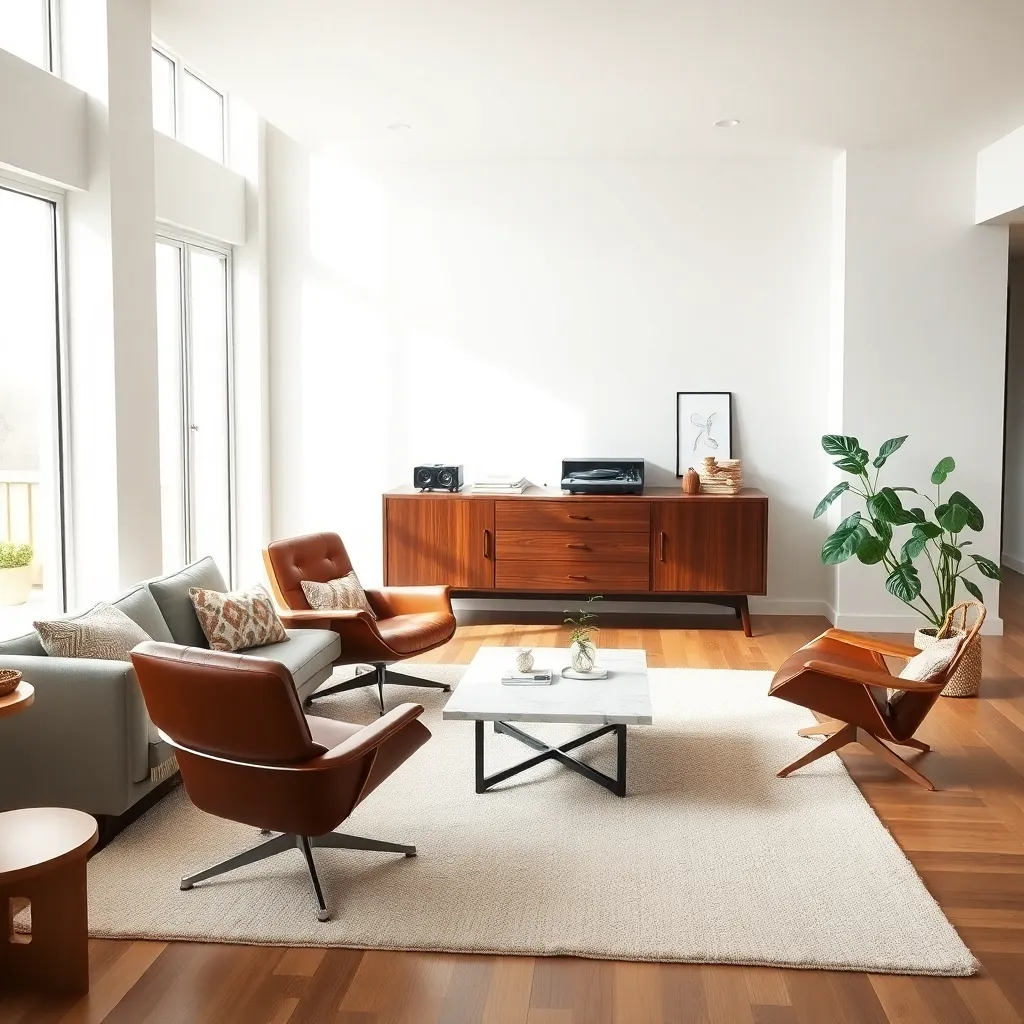
Incorporating timeless materials and forms into your mid-century modern furniture selection can elevate your space. Opt for pieces made from natural woods like teak, walnut, or oak, which are not only durable but also exude warmth and sophistication.
Consider pairing these wooden pieces with upholstered items in neutral colors such as gray, cream, or soft pastels to maintain an authentic mid-century aesthetic. Balanced color schemes can be achieved by incorporating textiles in these shades, ensuring a cohesive look throughout your space.
For those looking to add a contemporary twist, metal accents such as brass or stainless steel can introduce a sleek touch without disrupting the overall theme. These materials work well for table legs or lighting fixtures, providing both functionality and style.
When arranging your furniture, focus on creating open layouts that enhance the flow of the room. Position seating to encourage conversation, and use area rugs to define different zones, such as a reading nook or a dining area.
Mixing Mid-century with Contemporary Styles
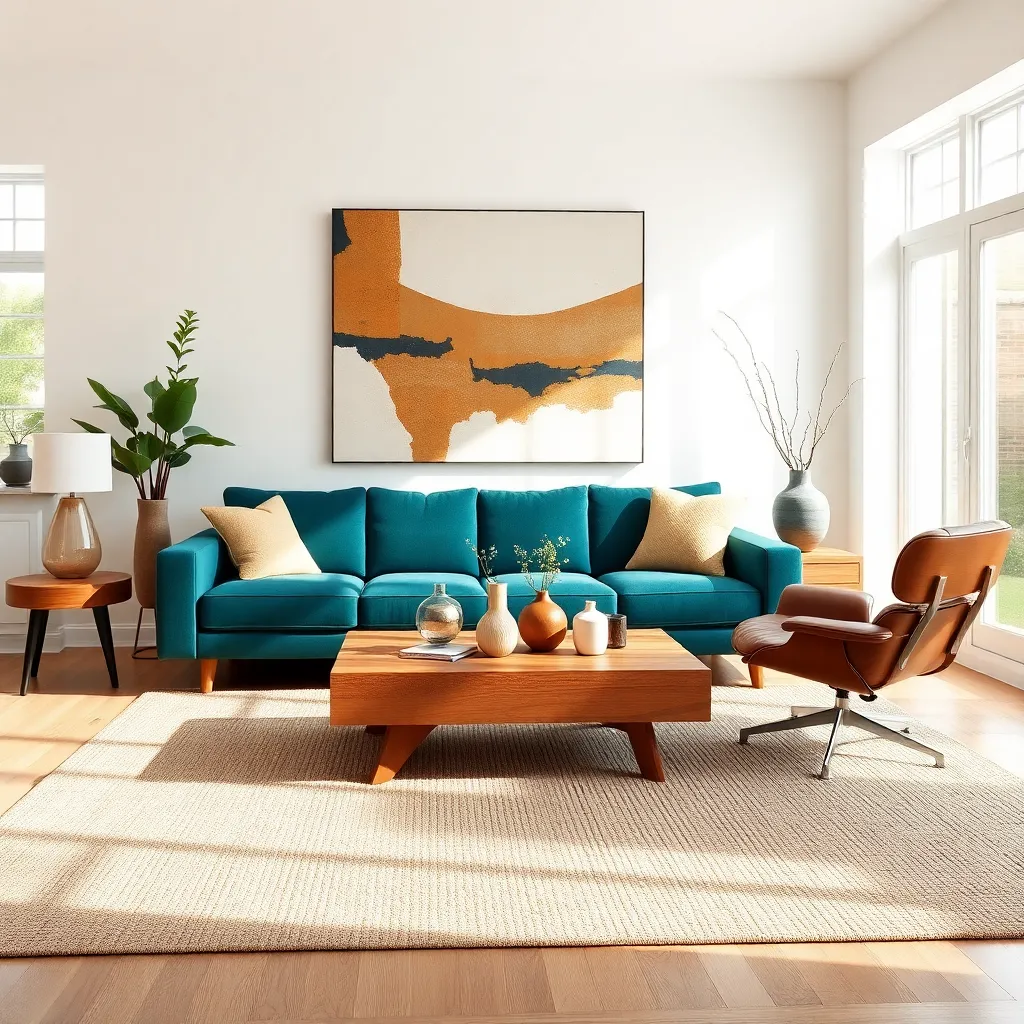
To seamlessly blend mid-century and contemporary styles, start by choosing a few iconic mid-century pieces, such as a classic Eames chair, to form the foundation of your room. These iconic pieces can then be paired with sleek, contemporary furniture, like a minimalist glass coffee table, to create an effective contrast.
Consider using a neutral color palette as a unifying background, which allows the distinct characteristics of each style to stand out without clashing. Neutral tones such as beige, gray, and white can serve as a calming canvas, letting vibrant accents from mid-century patterns or contemporary artwork pop.
Another practical approach is to mix materials thoughtfully, such as pairing vintage wooden sideboards with contemporary metallic light fixtures. The juxtaposition of warm wood against cool metals creates a dynamic visual interest that ties both styles together.
For a more advanced touch, experiment with layering textures by adding plush contemporary rugs over polished mid-century hardwood floors. This not only adds warmth and comfort but also bridges the gap between the two styles, creating a cohesive and inviting space.
Selecting Authentic Mid-century Finds
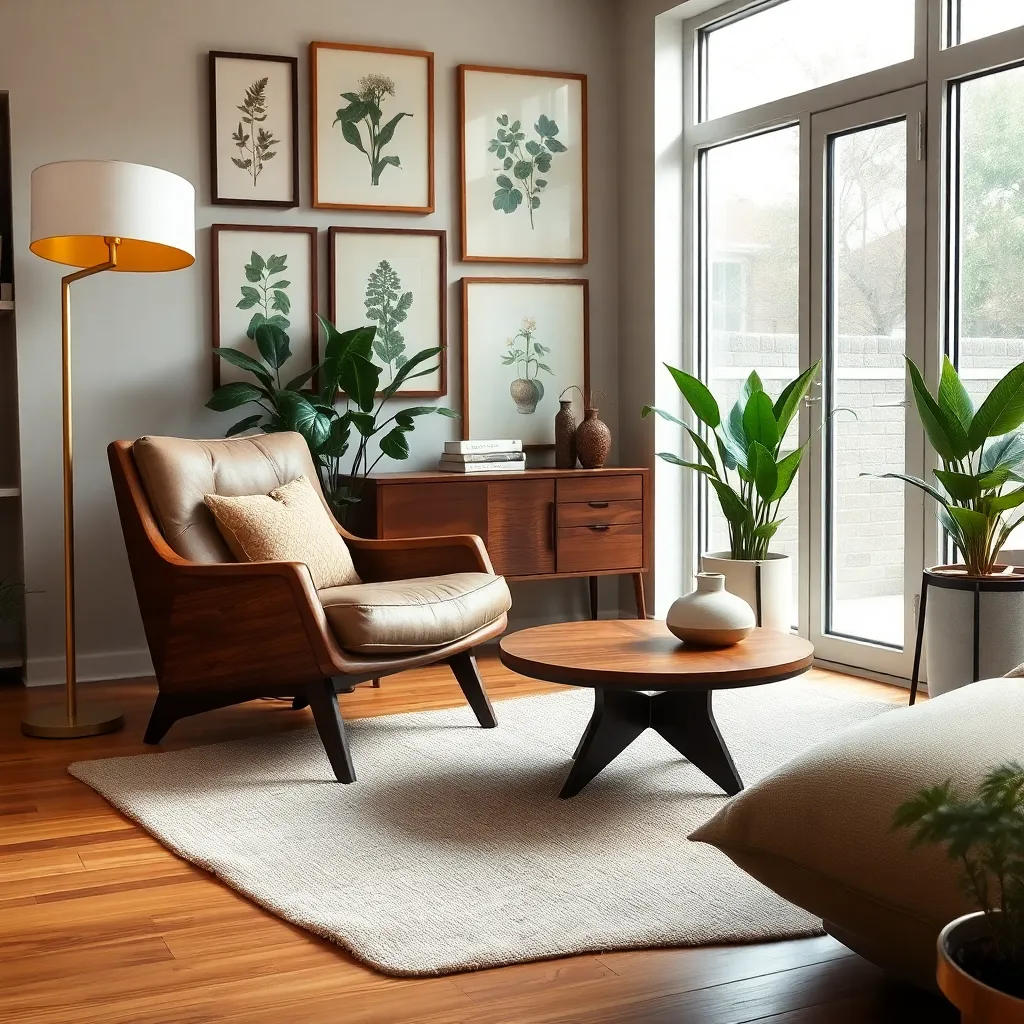
When selecting authentic mid-century finds, focus on pieces made from high-quality materials like teak, walnut, and rosewood. These woods are not only durable but also add a rich warmth to any space, making them a staple in mid-century design.
Look for furniture with clean lines and minimal ornamentation, as these are key characteristics of the mid-century modern style. Pieces like Eames chairs or Noguchi tables are iconic examples that blend form and function seamlessly.
To ensure authenticity, examine the construction details such as joinery techniques and leg design. Dovetail joints and tapered legs indicate a true mid-century piece, while replicas may use shortcuts in craftsmanship.
Consider incorporating a pop of color through upholstery choices like mustard, teal, or burnt orange, which were popular in the mid-century era. Pair these vibrant hues with a neutral backdrop to create a balanced and inviting atmosphere.
Conclusion: Growing Success with These Plants
In exploring ‘Mid-century modern furniture,’ we’ve uncovered five key relationship concepts that offer timeless wisdom: communication, adaptability, balance, support, and harmony. Just as mid-century modern design seamlessly blends form and function, thriving relationships require open communication to express needs, adaptability to evolve together, balance to nurture both individuality and togetherness, unwavering support for each other’s dreams, and harmony to create a peaceful, loving environment.
To put these principles into practice, start by initiating a heartfelt conversation with your partner today. Discuss what balance and harmony mean to both of you, and explore ways to adapt and support each other more effectively. This immediate step can lay the groundwork for a stronger connection.
Don’t let these valuable insights slip away—bookmark this article now for future reference. Having this guide at your fingertips will empower you to revisit and reinforce these concepts as you continue to build a resilient and thriving relationship.
Remember, relationship success is a journey, not a destination. By integrating these timeless principles, you’re not just investing in your relationship today but setting the stage for a fulfilling future together.
